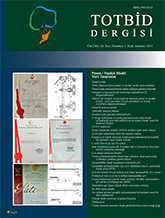
The application of endoprosthesis is a frequently used treatment method in the treatment of hip fractures in the elderly. The number of hip fractures in the advanced age patient group has increased associated with the increase in mean life expectancy, and there is therefore expected to be an increase in the need for revision endoprosthesis surgery. The most frequent reasons for failure after endoprosthesis application are pain, instability, infection and periprosthetic fracture. The starting point for the management of failed endoprosthesis application should be the correct determination of the etiology. The source of the problem should be determined with a systematic evaluation, and treatment should be planned according to this. Although the standard treatment for failed endoprosthesis is to convert it to total hip prosthesis, it should be kept in mind that there are other treatment options specific to the etiology. That there are usually comorbid systemic diseases and reduced bone quality in this particular age group make revision surgery more difficult. Although complication rates of revision surgery are high, with detailed preoperative planning and an experienced surgeon, complication rates can be reduced, and success can be achieved in mobilising the patient in a short time, which is a basic aim of the treatment, and reaching the previous level of activity.